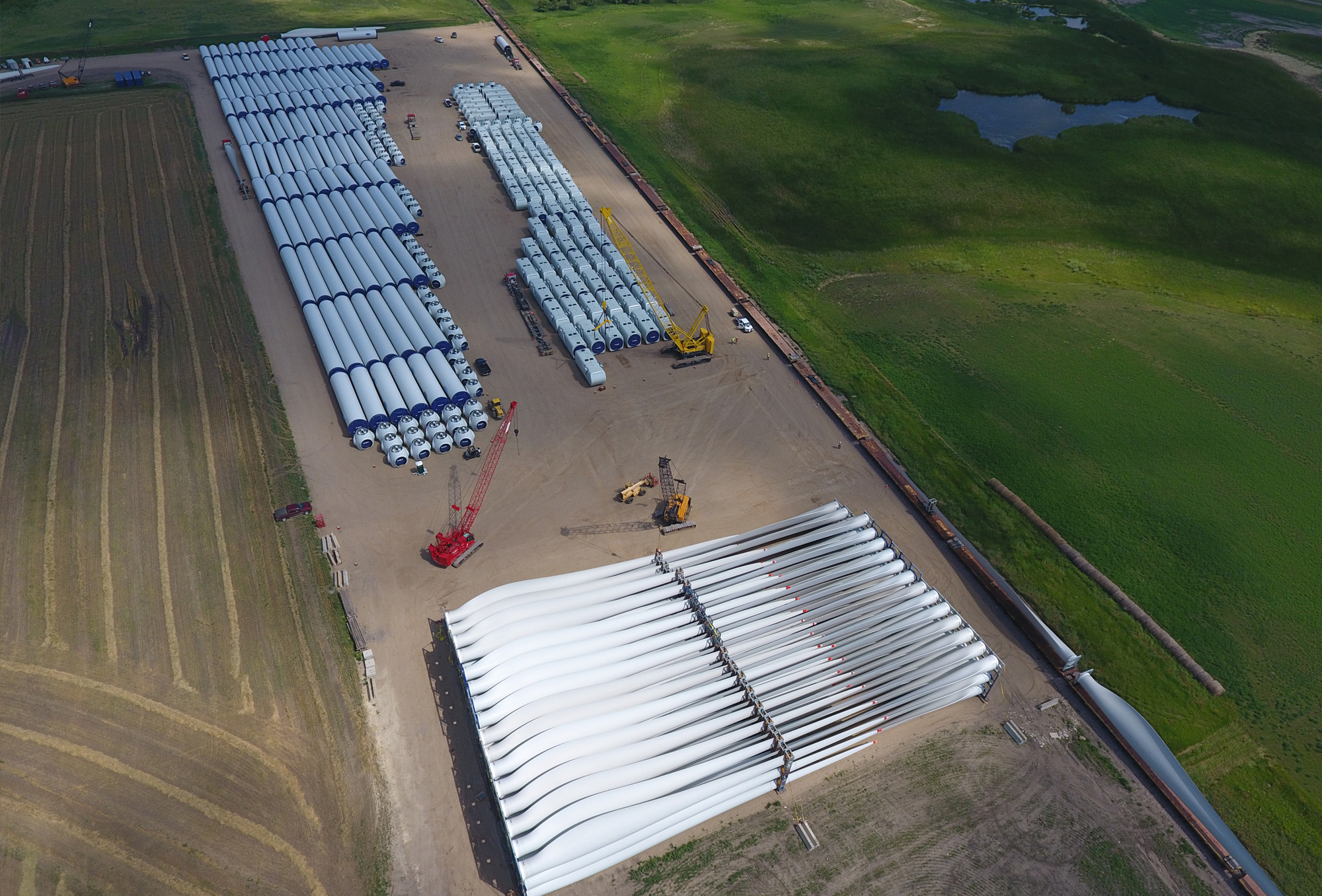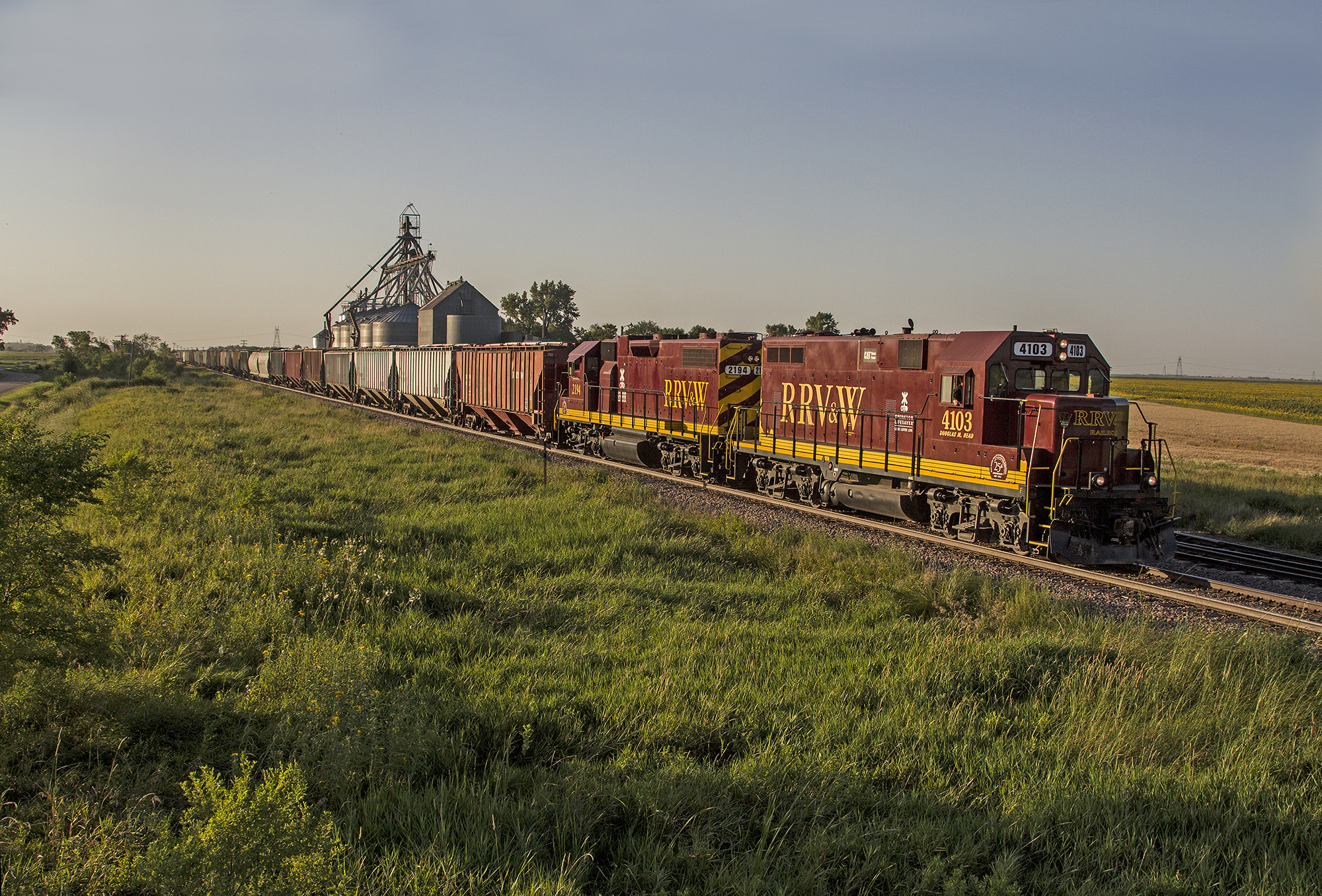Three Decades of Success: Celebrating Red River Valley & Western Railroad Co.’s Accomplishments
Red River Valley & Western Railroad Company (RRVW) will mark its 30th anniversary this July. With a total carload volume of 1.2 million units since its inception, RRVW moves approximately 60,000 carloads per year of commodities such as grain, sugar, corn syrup, fertilizer, steel, petroleum products, coal, gravel, farm machinery, feed products and wind energy equipment. RRVW operates on 577 route miles in North Dakota and Minnesota that it acquired from the Burlington Northern Railroad in July 1987.
Historically, RRVW is not only known for being the first shortline to move grain shuttle trains in the U.S., but also for hauling more grain shuttle trains than any other Class II or Class III railroad. In fact, the number of shuttle trains RRVW handled in 2016 increased by 54 percent versus their five year average. After adding the service to two new grain elevators last year, RRVW now serves more grain shuttle facilities (nine) than any other BNSF shortline connection.
Dan Zink, RRVW vice president, Economic Development & Community Affairs, recently shared more good news concerning RRVW’s grain shuttle program. "RRVW is helping establish an additional grain shuttle shipper, with expectations for them to ship their first train during the harvest of 2018," Zink said. "We will start construction on the loop track at their location this year, and we are excited to expand our shuttle train program even further."
Recent capital investments in the past year have also delivered significant benefits for the railroad and its customers. In 2016, RRVW invested $14 million into its Fourth Subdivision, upgrading the track to 115 pound rail and enabling the option to reroute more than half of their shuttle trains. Through this investment, RRVW reduced their route between Casselton, N.D. and Verona, N.D. from 158 miles to only 82 miles, cutting the cycle time for new and existing shuttle trains by 50 percent. Likewise, with the goal to more accurately measure performance, RRVW created a scorecard system to track and manage movement of shuttle trains, most of which are destined to the Pacific Northwest for export.
“Better cycle times mean lower costs for all participants,” Zink said. “Ultimately, train crews, customers and office staff are motivated to meet and continually improve cycle times since any delays can lead to loss of incentives for both RRVW and its customers.”
“With continued strong corn and soybean production in the U.S., RRVW shuttle customers helped BNSF set all-time record PNW grain exports in 2016” said Merril Lieb, BNSF’s assistant vice president, Shortline Development. “We appreciate RRVW’s willingness to work with BNSF and our mutual customers to improve service and lower the supply chain costs.”
RRVW also collaborated with BNSF in 2016 to finish a 20-acre transload facility project for wind energy equipment, located next to one of their existing lines and two of BNSF’s main lines. RRVW and BNSF worked together to ensure that the landowner selling the property and the surrounding community recognized the merit of the project before beginning construction in November 2015. The 20-acre site was fitted with geotextile fabric and 30,000 tons of gravel to ensure the integrity of the soil, and 9,000 feet of track was upgraded with 3,300 new ties and 3,800 tons of ballast. During the project, RRVW transported 15 trains, or 833 cars, of wind energy equipment.
“All of the wind energy trains had to perform a live interchange due to the track length limitations at Jamestown, N.D., so BNSF and RRVW crews were on the spot to take a train either inbound or outbound to avoid congestion caused by the longer trains,” Zink said. “It really was a fantastic example of interchange coordination with BNSF.”
As for current and upcoming opportunities, Zink cited wind energy as a continuing source for new business, with the potential for another transload site inside the new facility’s loop track. This would provide another transload site for wind energy development, which could serve both North Dakota and South Dakota markets. Other 2017 initiatives for RRVW involve their ongoing commitment to annual track maintenance, including replacing around three miles of rail on their First Subdivision, the busiest segment of track on their system and an important route for BNSF, as well as track replacement of their Sixth Subdivision between Jamestown, N.D. and Adrian, N.D.

